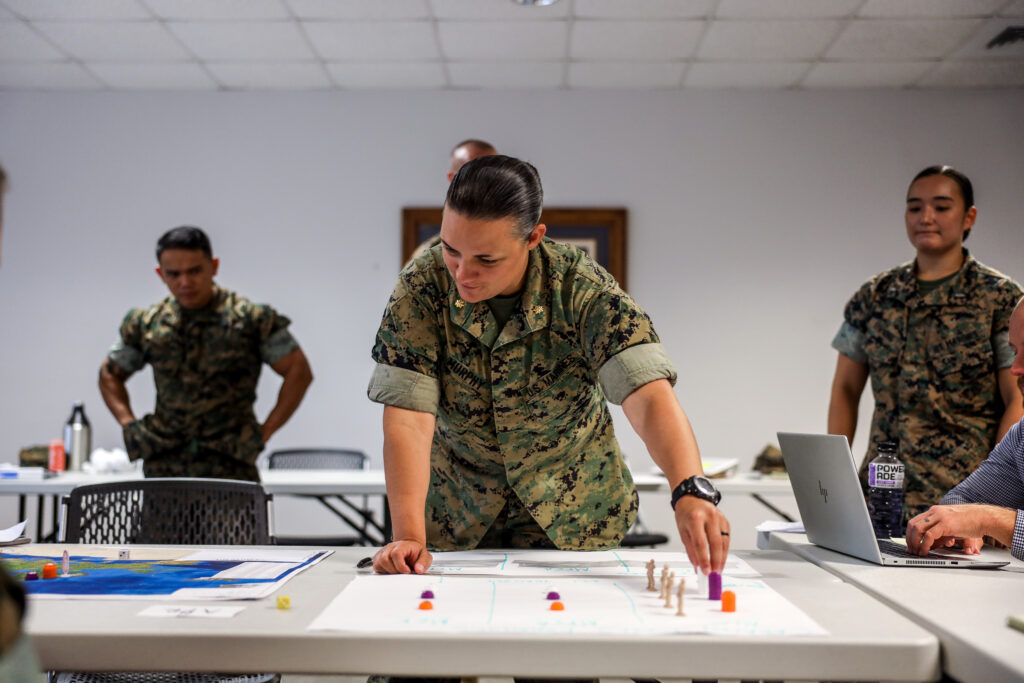War gaming, the use of strategic simulations in military planning, has been employed for centuries. It allows military leaders to test scenarios, evaluate outcomes, and refine strategies in a controlled environment. Strategic simulations offer advantages such as the ability to experiment with different strategies without real-world deployment, providing a holistic view of the battlefield, and identifying vulnerabilities and opportunities. However, challenges include the accuracy and realism of the simulations and ensuring participant engagement. Teachable lessons from war gaming include adaptability and flexibility in warfare, as well as the significance of collaboration and communication among different military branches. In conclusion, strategic simulations contribute to the development of effective and adaptive military forces.
The Art of War Gaming: Analyzing the Role of Strategic Simulations in Military Planning
Introduction
War gaming has been used as a tool for military planning and strategizing for centuries. From the strategic board games of ancient civilizations to the complex virtual simulations of modern warfare, war gaming allows military leaders to test different scenarios, evaluate potential outcomes, and refine their strategies in a controlled environment. In this article, we will explore the role of strategic simulations in military planning, highlighting their advantages, limitations, and the lessons they can teach us.
Advantages of Strategic Simulations
One of the main advantages of strategic simulations is the ability to explore and experiment with different strategies without the need for real-world deployment of troops and resources. This not only saves time and money but also reduces the risks associated with real-life combat. Military leaders can simulate various tactics, test alternative plans, and gauge their effectiveness in a virtual environment before implementing them on the battlefield.
Another advantage of war gaming is its ability to provide a holistic view of the battlefield. In a complex and dynamic environment, it can be challenging to comprehend the full scope of a military operation. However, strategic simulations allow commanders to visualize the entire theater of operations, including the positions and movements of friendly and enemy forces, terrain features, and logistical considerations. This comprehensive understanding helps in identifying potential vulnerabilities, strategic advantages, and opportunities for success.
Challenges and Limitations
While strategic simulations offer numerous benefits, they also come with challenges and limitations. One such limitation is the accuracy and realism of the simulation itself. Simulations can only capture a limited range of variables, and some aspects of warfare, such as human decision-making or the fog of war, are difficult to replicate accurately. Additionally, simulations heavily rely on existing data and historical information, which may not account for unforeseen events or novel enemy strategies.
Another challenge in war gaming is ensuring that the participants are actively engaged and committed to the simulation. It is essential to create an environment where individuals fully embrace the simulated experience and make decisions as they would in a real-life situation. This requires investment in training, developing comprehensive scenarios, and creating realistic challenges to maintain the participants’ focus and dedication.
Teachable Lessons
Despite these challenges, strategic simulations offer invaluable lessons for military planners. One crucial lesson is the importance of adaptability and flexibility in warfare. Simulations frequently expose commanders to unexpected scenarios or outcomes that force them to adjust their strategies rapidly. This adaptability is critical in modern warfare, where the rapid pace of technological advancements and the uncertainty of the geopolitical landscape demand flexibility from military leaders.
Additionally, war gaming teaches the significance of collaboration and communication among different branches and units within the military. Strategic simulations demonstrate the interdependencies and coordination required between air, land, and sea forces, as well as intelligence and logistical support. By highlighting the need for effective communication and joint planning, war gaming fosters a cohesive and synchronized military strategy.
Conclusion
Strategic simulations play a vital role in military planning by allowing commanders to test strategies, explore different scenarios, and gain valuable insights on the battlefield. While they have their limitations, these simulations provide an environment for learning, refinement, and innovation. By challenging and shaping military strategies, war gaming contributes to the development of effective and adaptive military forces capable of meeting the challenges of the ever-changing world.
